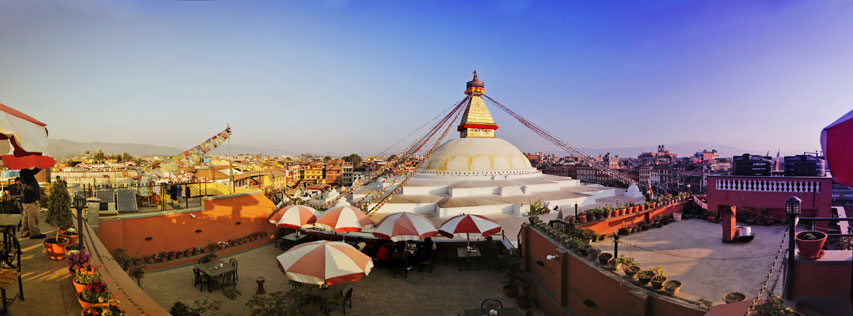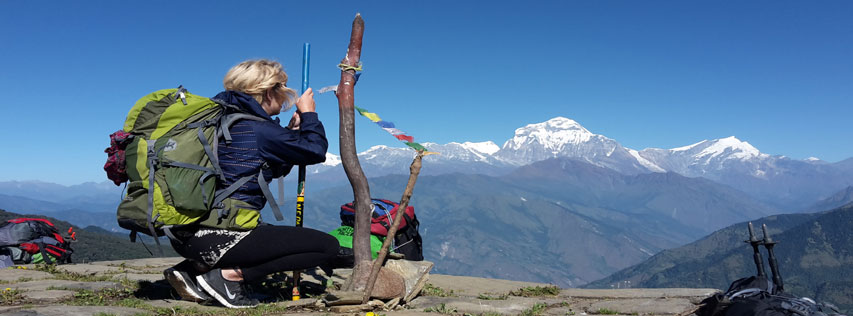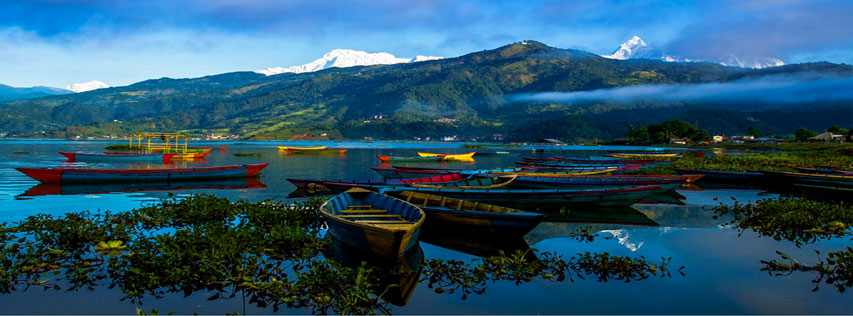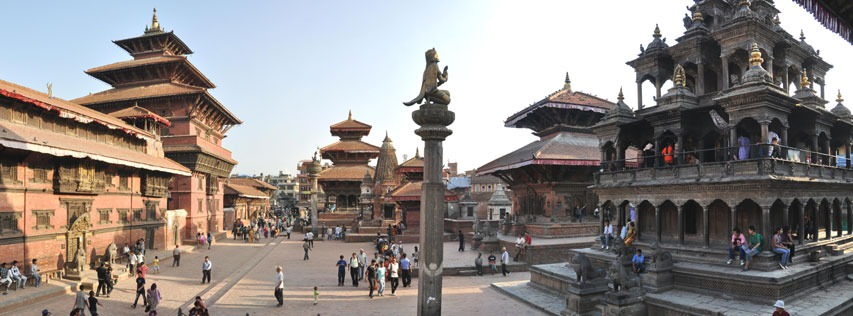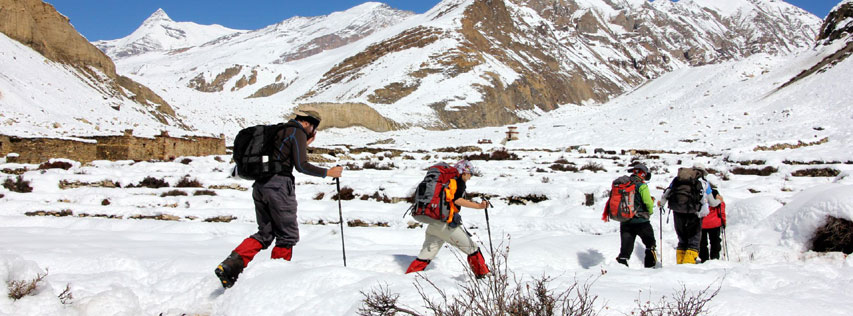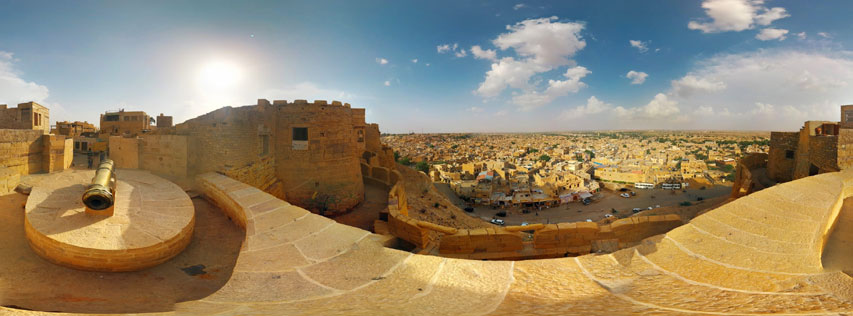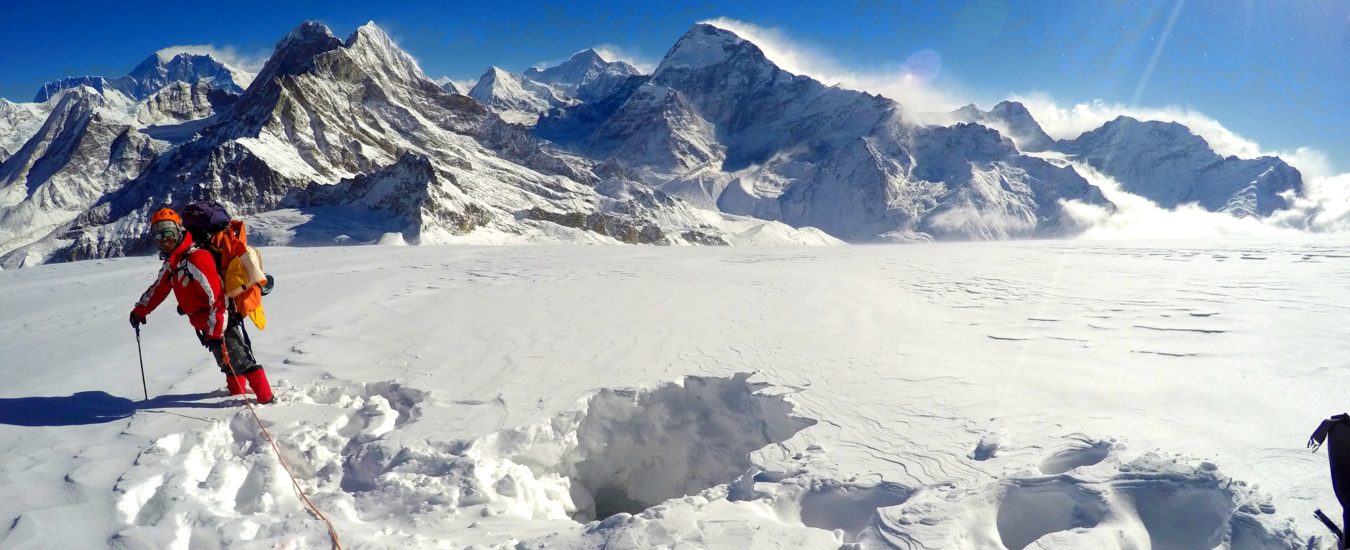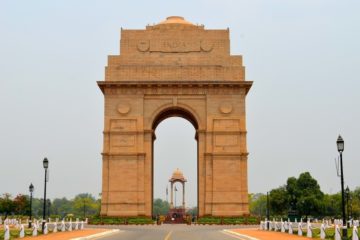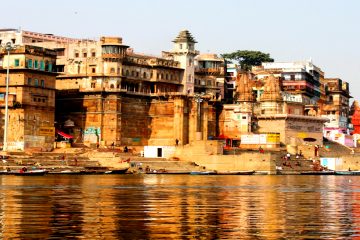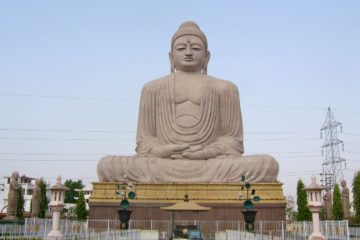The India and Nepal tour takes you on a tour of the important cities that draws tourists in great numbers to India and Nepal. This tour gives you an idea of the essence of India and covers important cities of India: Delhi, Jaaipur, Agra, Khaajuraho, Wildlife the Panna National Park, & Varanasi. Apart from India it takes you on an exciting trip to Kathmandu, which is the capital of the Himalayan Kingdom – Nepal..
| PLACES COVERED | DELHI-JAIPUR-AGRA-KHAJURAHO-VARANASI-KATHMANDU-POKHRA | ||||||
| DURATION OF TRIP | 14 NIGHTS/15 DAYS | ||||||
| MINIMUM REQUIRED | 2 PAX | ||||||
| ACCOMMODATION | BUDGET ACCOMMODATION | ||||||
| DEPARTURE/RETURN LOCATION | PICKUP Delhi/DROP Kathmandu (Nepal) | ||||||
| RETURN TIME | Approximately 6:30 PM/Depends on onward Journey | ||||||
| WEAR | Comfortable athletic clothing, sunscreen. | ||||||
| BASIC INCLUSION |
|
||||||
| BASIC EXCLUSION |
|
DAY 01:- Arrive Delhi
On arrival at Delhi airport or railway station, our representative will meet you to pick you up and transfer to your hotel. Rest of the day is at your leisure. Stay overnight at the hotel in Delhi.
DAY 02:- Delhi Sightseeing
After Breakfast Sightseeing Tour of Delhi :
Red Fort:-Delhi’s most famous monument, the Red Fort, stands as a powerful reminder of the Mughal emperors who ruled India. Its walls, which stretch for over two kilometers (1.2 miles), were built in 1638 to keep out invaders. However, they failed to stop the fort being captured by the Sikhs and the British. To take your imagination back to the ancient era, a one hour sound and light show of the fort’s history is held each evening.
Jamia Masjid:-Jama Masjid is another marvelous treasure of the Old City, and is the largest mosque in India. Its courtyard can hold an incredible 25,000 devotees. The mosque took 13 years to build, and was completed in 1650. A strenuous climb to the top of its southern tower will reward you with a stunning view across the rooftops of Delhi.
Humayun’s Tomb:-If you think Humayun’s Tomb looks a bit like the TajMahal in Agra, that’s because it was the inspiration for the TajMahal’s creation. The tomb was built in 1570, and houses the body of the second Mughal emperor, Humayun. It was the first of this type of Mughal architecture to be built in India, and the Mughal rulers followed it up with an extensive period of construction all over the country.
QutubMinar:-QutabMinar, the tallest brick minaret in the world, is an incredible example of early Indo–Islamic architecture. It was built in 1206, but the reason remains a mystery. Some believe that it was made to signify victory and the beginning of Muslim rule in India, while others say it was used to call the faithful to prayer.
Lotus Temple:-The Bahai Temple is commonly referred to as the Lotus Temple, as it’s shaped like a lotus flower. It’s particularly pretty at night, when it’s attractively lit up. Made out of white marble, the temple belongs to the Bahai Faith, which proclaims the unity of all people and religions. Everybody is welcome to worship there.
India Gate:-The towering archway of India Gate at the center of New Delhi is a war memorial, built in memory of the Indian soldiers who lost their lives fighting for the British Army in World War I. At night it glows warmly under floodlights, and the gardens that line its boulevard are a popular place to enjoy a warm summer’s evening.
Laxmi Narayan Temple:-Built in 1938 by the Industrialist G.D. Birla, it is one of the major temples in Delhi and is located near Connought Place. The temple is dedicated to Goddess Laxmi and her consort Narayana. The temple was inaugurated by Mahatma Gandhi on the stipulation that people of all castes shall be allowed to enter the temple.
Stay overnight at Hotel in Delhi.
Day-3: Delhi - Jaipur
After breakfast proceed to Jaipur. On Arrival Start sightseeing tour of Jaipur:
City Palace:-situated in the heart of the old City, it occupies about one seventh of the old city area. The palace is a blend of Rajput and Mughal architecture, it houses a Seven storeyed Chandra Mahal in the centre, which affords a fine view of the gardens and the city.
JantarMantar:-built in 18th century by Maharaja Sawai Jai Singh II, the huge masonary instruments were used to study the movement of constellations and stars in the sky. Enormous sun-dial still provides accurate time, which is subject to daily corrections.
HawaMahal:-built in 1799, by Maharaja SawaiPratap Singh, is the most recognizable monument of Jaipur. The 5 storied stunning semi-octagonal monument having 152 windows with over hanging latticed balconies is a fine piece of Rajput architecture.
Albert Hall Museum:- Situated in the Ram Niwas Garden. It has a rare collection of archaeological and handicraft pieces.
Stay overnight at Hotel in Jaipur.
Day-4: Jaipur
Early morning after breakfast proceed to sightseeing tour of Jaipur Visit:
Amer Fort:-The old capital of the Kachhwahas stands atop a range of craggy hills. The fort is remarkable as much for the majestic grandeur of its surroundings as for its sturdy battlements and beautiful palaces. It is a fine blend of Hindu and Muslim architecture. The solemn dignity of it red sandstone and white marble pavilions, when reflected in the lake at the foot hill, is a sight to behold. The original palace was built by Raja Man Singh, the additional extensions were built by Maharaja Mirja Raja Jai Singh and Sawai Jai Singh lIthe last Maharaja of Amer, who built a new city called Jaipur, where he shfted his capital in 1727.
JalMahal:-On the way to Amer, this small palace is set in the middle of Man Sagar Lake. Renovation around the lake is in progress.
Stay overnight at hotel in Jaipur.
Day-5: Jaipur - Agra
After early breakfast until 8:00 am proceed to Agra upon arrival at hotel check-in to the hotel later visit to TajMahal:
TajMahal:-You cannot think of Agra without thinking of TajMahal. Or, you might not have thought of Agra were it not for the monument of love. TajMahal, the white marble beauty was constructed by Shah Jahan in memory of his beloved wife, MumtazMahal. The monument stands proof for the brilliance of Mughal architecture.
(*Note: Tajmahal Closed on every Friday)
Agra Fort :-You would regret if you miss Agra Fort during your visit to Agra. The 16th century monument is yet another proof of the architectural brilliance of Mughals. This is situated near the gardens of the world famous TajMahal. Called the Red Fort of Agra, you will be awe inspired by the powerful fortress. The fortress comprises many palaces namely, Jahangir Palace, KhasMahal and so on.
Later return toHotel. Stay overnight at Hotel in Agra.
Day-6: Agra / Khajuraho (415 km / 08 hours)
After morning breakfast until 8:00 am check out from the hotel in Agra for Khajuraho:
On arrival in Khajuraho check-in to the hotel. Overnight stay.
Day-7:Khajuraho Temples & Monuments Tour
After breakfast visit the legendary temples of khajuraho are an incomparable experience. Acknowledged as one of the world’s artistic wonders, these temples dedicated to the Hindu pantheon of Gods are covered in carvings that are a paean to life and love. Built within a short span of a hundred years by the ChandelaRajputs, the 10th century temples lay forgotten until they were discovered in the present century. Khajuraho has achieved fame for the sensual appeal of its erotic sculptures.
Later return to the hotel, overnight stay in Khajuraho.
Day-8: Khajuraho Panna National Park for Tiger Safari – Varanasi by Road
Early morning is ready 05:30 am with packed breakfast from hotel in Khajuraho and visit the Panna National Park (35 minutes drive by road) that is home to a large number of tigers. In addition to tigers, you can also find chital deers, sambar deers, nilgai, chinkara, chowsingha, langoor, wild boar and jackal.
This safari timings start 06:30 and end 10:00 am by sharing Jeep with jungle tour guide. Return to hotel pack bags and check out and proceed for Varanasi.
Upon arrival in Varanasi check-in to Hotel. Overnight stay in Varanasi.
Day-9: Varanasi City Tour
Early morning after breakfast start a sightseeing tour of Varanasi visit:
Annapoorna Devi Temple:-Annapurna or Annapoorna is the Hindu Goddess of nourishment. Anna means food and grains. Purna means full, complete and perfect. She is form of Parvati, the consort of Shiva. The most well-known temple dedicated to Goddess Annapurna is in Varanasi, U.P., India. Adjacent to the Sanctum of the Goddess is the KasiViswanath temple. The two are separated by only a few yards.
KashiVishwanathTemple :-KashiVishwanath Temple is one of the most famous Hindu temples dedicated to Lord Shiva and is located in Benaras, the Holiest Place of Hindus (and center of earth in Hindu Cosmology) where at least once in life a Hindu is expected to do pilgrimage and if possible pour the remains (ashes) of cremated ancestors here on the River Ganges.
AssiGhat:-AsiGhat, the Ghat located at the confluence of Assi River and the holy Ganges, is the southernmost Ghat in Kashi. The Ghat is renowned for a spectacular and large Shiva Lingam placed under a Peepal Tree. This is a favorite spot for Hindu devotees to offer their prayers to Lord Shiva after taking holy dip in the river.This religiously important place got its reference in many puranas, including MatsyaPurana, KurmaPurana, Agni Purana and Padma Purana. Legendary stories describe this Ghat as the place where GoodessDurga thrown out her sword after killing the Asura demons Shumbha- Nishumbha.
DashaswamedhGhat:-DashaswamedhGhat, a much acclaimed religious spot, is a very favorite among the Hindu devotees and is considered as the main Ghat. It is believed that Lord Brahma performed his victorious Dasa_Ashwamedha (ten-horses) sacrifice in this spot. Legends claim that a similar kind of ten horse sacrifice was done here in the second century by Bhara Shiva Naga rulers.
Stay overnight at hotel in Varanasi.
Day-10: Varanasi – Delhi (By Morning Flight)& Old Delhi Market Tour
After breakfast transfer to the airport in Varanasi to take flight for Delhi. On arrival at Delhi airport meet with our representative pick you up and transfer to your hotel. Later in afternoon proceed for Old Delhi Market sightseeing tour. “Our guide will give you the key information about the places that you visit without overwhelming you with too many historical facts and figures. Old Delhi is the busy and chaotic heart of Delhi. In the afternoon, we’ll head to this historic area of Delhi that was originally built as the capital of the Mughal Empire in 1639.”
Later driver back to the hotel, Stay overnight at the hotel in Delhi.
Day-11:-Delhi – Kathmandu (By Flight)
After breakfast transfer to Delhi airport to catch the flight for Kathmandu, Nepal. On arrival in Kathmandu airport meet & assist with our tour representative he will assist you to drop at hotel in Kathmandu. Kathmandu city and Swayambhunath temple, also popularly called as Monkey Temple, is situated on a beautiful hill on the western part of the main city of Kathmandu. It is a Buddhist temple, but one can see the harmony among Buddhist and Hindu devotees meet in Soyambhunath where both the kinds of temples.
Later drive back to hotel. Overnight stay in Kathmandu.
Day-12: Kathmandu /Mouteverest /Pokhara
Early Morning Pickup from Hotel for Everest Flight at 5.30 Am And Later back to Hotel For Breakfast After noon drive to Pokhara. Overnight stay in Pokhara.
Day-13:- Pokhara
After breakfast proceeds to sightseeing:
You can enjoy the ambiance of Pokhara in the natural settings with towering Himalayas in the back drop. Visit Devi’s Fall and Tibetan Refugee Camp. Explore Phewa lakeside market. Phewa lake boating in the evening to catch the reflection of Himalayas on the Phewa Lake.
Himalayan Peak seen: Dhaulagiri (8,167 m / 7th highest); Annapurna range including Annapurna I (8,091 m / 10th highest) and Manaslu Range (8,163 m / 7th highest)
Later drive back to hotel, Overnight stay in Pokhara.
Day-14:- Pokhara / Kathmandu/Delhi (Evening Flight)
After morning breakfast day free later check out from hotel and proceed to Kathmandu airport to catch the flight in evening. Upon arrive in Delhi airport meet & assist tour representative later transfer to your hotel in Delhi, overnight stay in Delhi.
Day-15:- Delhi Chandni Chowk Visit/Delhi airport (Fly back Home)
After morning breakfast proceed Delhi chandni Chowk tour “Chandni Chowk is the main street of the old city of Delhi (Shahjahanabad). Chandni Chowk, literally means moonlight square and derives its name from the fact that originally, a canal ran down the centre of the street with pools at major intersections which would reflect moonlight. Today, the stream is gone and Chandni Chowk is an extremely busy road. There are shops, schools, residences, places of worship, old and new along the road.”
Later drive to the Delhi airport in the late evening to get Flight and departure to your onward destination.
PRICES BASED ON BUDGET ACCOMMODATION FOR UPGRADE PLEASE EMAIL
General Inclusion:
For India:-
- A safe and comfortable air-conditioned Private car with driver, all inclusive. (Fuel for Bus, road and state taxes, toll fees, parking fees, and driver’s food and lodging).
- The car will be with you from your arrival to departure with as many stops to sight see as you want.
- A Driver with excellent skills and record, a good knowledge of the area you are visiting and sufficient English to communicate.
- Transfers and land transportation according to itinerary.
- Accommodation Double or Twin rooms with Bed and Breakfast
- Guided tour in each city by English speaking tour guide.
- Flight Varanasi/Delhi
- Sightseeing Tours in All Cities
- Boat Ride in Varanasi
- Elephant Ride in Jaipur
- Free visit to Jaipur’s famous block painting work shop
- Free visit to Tajmahal Inlay Marble (Work Shop)
- RICKSHAW RIDE IN OLD DELHI
- Flight Delhi – KTM
For Nepal: –
- Airport pickup & drop
- Welcome Dinner in Kathmandu with cultural Program.
- Meals, accommodation, insurance and other expenses of trekking crew (guide and porters) 2 people will have one porter and highly experienced English speaking guide.
- Accommodation in lodge in attach room with breakfast during the trek
- Sightseeing tours in Kathmandu and Pokhara by private vehicle with guide
- Kathmandu- Pokhara by flight
- Mounteverest Flight “Subject to Weather “
PRICES BASED ON BUDGET ACCOMMODATION FOR UPGRADE PLEASE EMAIL
General Exclusion:
- Tips, laundry, telephone bills, luggage handling and Beverages.
- Meals unless specified
- Any monument entrance tickets
- Personal equipment and clothing
- Lunch & dinner in Kathmandu, Pokhara and trekking days. (Meal costs about 4 – 6 dollar per item depending on place where you eat)
VISA INFORMATION
OVERVIEW
All foreign nationals entering India are required to possess a valid international travel document in the form of a national passport with a valid visa obtained from an Indian Mission or Post abroad.
All Individual visa seekers are requested to apply for the Indian Visa through Online application link , in order to make an application for getting the Indian visa.
The duly signed physical copy of the application form completed in all respect and submitted successfully, is to be submitted at the concerned Indian Visa Application Center (IVAC) or directly to Indian Mission/ Post, on the scheduled date of interview along with the requisite supporting documents. The instructions for filling the form and scheduling the appointment can be seen at Instructions for Online Visa Application. Important technical information for filling online Indian visa application can be referred at Technical Instructions.
The applicants are also requested to visit website of the Indian Mission concerned for detailed information about Indian visa.
ONLINE VISA APPLICATION
All Individual visa seekers are requested to apply for the Indian Visa through online application link. Or can apply by typing the URL: http://indianvisaonline.gov.in/visa/ in the address bar of web browser, in order to make an application for getting the Indian visa. In either case, no hand written application form will be accepted by any of the Indian Mission/ Post, where-ever online Visa facility has been implemented. The application form completed in all respect and submitted succesfully, is to be submitted at the concerned Indian Visa Application Center (IVAC) or directly to Indian Mission/ Post in absence of IVAC, on the scheduled date of interview along with the requisite supporting documents. The instructions for filling the form and scheduling the appointment can be refered at Instructions for Online Visa Application. Important technical information for filling online Indian visa application can be referred at Technical Instructions. If you have already applied online for Indian Visa online and want to know the status of your application,
VISA CATEGORIES
Government of India issues the following visas: Business Visa, Conference Visa, Diplomatic Visa, Employment Visa, Emergency Visa, Entry Visa, Journalist Visa, Medical Visa, Missionaries Visa, Permit to re-enter within 2 months, Research Visa, Student Visa, Tourist Visa, Transit Visa. Please follow the link for details on Visa Provision and supporting documents
VISA PROCESSING TIME
Upon receipt of the Visa Application through Indian Visa Application Center or directly, the Indian Mission/ Post requires a minimum of three working days to process the case and issue a visa depending upon the nationality and excluding special cases.
PHOTO REQUIREMENTS
Online India Visa Application allows the Applicant to upload a digital photograph of self to complete the online visa application.
Guidelines/procedure to upload a digital photograph
The digital photograph to be uploaded along with the Visa application should meet the following requirements:
Format – JPEG
Size
Minimum 10 KB
Maximum 300 KB
The height and width of the Photo must be equal.
Photo should present Full face, front view, eyes open.
Center head within frame and present full head from top of hair to bottom of chin.
Background should be plain light colored or white background.
No shadows on the face or on the background.
Without borders.
Make sure that photo presents full head from top of hair to bottom of chin. Head should measure 1 inch to 1-3/8 inches (25mm to 35mm). Make sure eye height is between 1-1/8 inches to 1-3.
FEE FOR INDIAN VISA
The visa fee depends upon the type of applied for and duration of visa. Visa fee is divided into various types depending upon the case viz; Basic fee, special fee, processing fee by out-sourcing agency. During the online registration process, at the end of the process the basic fee shall be displayed. However, this fee shall be indicative only and final fee shall be charged while submitting the application at the respective counters Fee once received are non-refundable even if the visa application is withdrawn, the visa is not granted, or if visa issued is of shorter duration of period than applied for or otherwise issued or returned at a time or on terms and conditions that may vary from those sought by the applicant. For further information on this, please check with local embassy office or Indian Visa Application center office or websites for information on applicable fee and payment methods.
VISA PROVISION
| Sl. No. | Type of Visa | Period for which granted | Entry – Single (S), Multiple (M), Double | Documents required with application | Extendable in India |
| 1 | Tourist | 180 days | M | – | No |
| 2 | Transit | 15 days | S/ Double | Return/ onward journey ticket | No |
| 3 | Business | 5 years | M | Documents to prove bonafide purpose (Company’s letter etc.) | Yes |
| 4 | Employment | 1 year/ period of contract | M | Proof of employment (appointment document), terms and conditions | Yes |
| 5 | Student | Period of course/ 5 years | M | Proof of admission in Indian Institution | Yes |
| 6 | Foreigners of Indian Origin | 5 years | M | Proof of being of Indian Origin | Yes |
INSTRUCTIONS
- Online application form:
This application form is meant for those foreigners who are applying for visa from outside India.
Each online application form is meant for one person only. Separate application has to be filed for each applicant.
Furnish information exactly in the manner asked for in the forms, especially the names, address and date of birth.
Applicants are required to verify the application details before submitting the online application. They have an option to save the online application form, in case it is not to be submitted.
Once the online application form is submitted by the applicant, then further modifications are not allowed. Hence applicants are requested to check and validate the details before submitting the online application form.
Applicants are requested to keep the Application Id (generated automatically after the submission of online form) for further communications.
- Appointment Scheduling:
Applicant can schedule the appointment as per his/ her convenience with the concerned Indian Mission.
Each applicant to schedule a separate appointment with the Indian Mission
- Process for filling up online application form:
Applicant shall access the Visa Application system online through the following link: http://indianvisaonline.gov.in/visa/.
Applicant visits the above mentioned web link and selects the Indian Mission from where he intends to apply for the Visa from the tab “Select Mission”.
Applicant fills the application on-line as per the forms standardized by the Ministry.
After filling the form and submitting it, the system shall automatically generate a Application Id. Applicants are requested to keep this Application Id for further communications with the concerned Indian Mission.
System will automatically ask the Applicant for the following confirmation: “Select ‘Yes’ if the applicant want to seek appointment and make payment online or ‘No’ if the applicant just want to print the submitted application form.”
If the applicant response is “No”, then it is requested by the applicant to take the print out of the submitted online application form and approach the concerned Indian Mission for submission of the online form along with supporting documents.
If the response from applicant is “yes” then the system automatically takes the link to perform the following:
Selection of Date and Time of appointment at the concerned Indian Mission
Calculation of Visa fee, service charge, VAT etc. as applicable according to the Visa type
E Payment using service provider’s payment system
In case the facility of Appointment Scheduling and e-Payment is not available for the concerned Indian mission, then applicant has to take the printout of the online application form and visit the concerned Indian Mission to submit the same along with supporting documents and make the payment.
Indian Culture: Traditions and Customs of India
India’s culture is among the world,s oldest; civilization in India began about 4,500 years ago. Many sources describe it as “Sa Prathama Sanskrati Vishvavara” — the first and the supreme culture in the world, according to the All World Gayatri Pariwar (AWGP) organization.
Western societies did not always see the culture of India very favorably, according to Christina De Rossi, an anthropologist at Barnet and Southgate College in London. Early anthropologists once considered culture as an evolutionary process, and ”every aspect of human development was seen as driven by evolution,” she told Live Science. “In this view, societies outside of Europe or North America, or societies that did not follow the European or Western way of life, were considered primitive and culturally inferior. Essentially this included all the colonized countries and people, such as African countries, India, and the Far East.”.
However, Indians made significant advances in architecture (Taj Mahal), mathematics (the invention of zero) and medicine (Ayurveda). Today, India is a very diverse country, with more than 1.2 billion people, according to the CIA World Factbook, making it the second most populous nation after China. Different regions have their own distinct cultures. Language, religion, food and the arts are just some of the various aspects of Indian culture. Here is a brief overview of the culture of India.
Language
India has 28 states and seven territories, according to the World Health Organization. There is no official language in India, according to a Gujarat High Court ruling in 2010. Many people living in India also write in Devanagari script. In fact, it is a misconception that the majority of people in India speak Hindi. Though many people speak Hindi in India, 59 percent of India residents speak something other than Hindi, according to The Times of India. Bengali, Telugu, Marathi, Tamil and Urdu are some other languages spoken in the country.
Religion
India is identified as the birthplace of Hinduism and Buddhism, the third and fourth largest religions. About 84 percent of the population identifies as Hindu, according to the “Handbook of Research on Development and Religion” Edited by Matthew Clarke (Edward Elgar Publishing, 2013). There are many variations of Hinduism, and four predominant sects — Shaiva, Vaishnava, Shakteya and Smarta.
About 13 percent of Indians are Muslim, making it one of the largest Islamic nations in the world. Christians and Sikhs make up a small percentage of the population, and there are even fewer Buddhists and Jains, according to the “Handbook.”
Food
When the Moghul Empire invaded during the sixteenth century, they left a significant mark on the Indian cuisine, according to Texas A&M University. Indian cuisine is also influenced by many other countries. It is known for its large assortment of dishes and its liberal use of herbs and spices. Cooking styles vary from region to region.
Wheat, Basmati rice and pulses with chana (Bengal gram) are important staples of the Indian diet. The food is rich with curries and spices, including ginger, coriander, cardamom, turmeric, dried hot peppers, and cinnamon, among others. Chutneys — thick condiments and spreads made from assorted fruits and vegetables such as tamarind and tomatoes and mint, cilantro and other herbs — are used generously in Indian cooking.
Many Hindus are vegetarians, but lamb and chicken are common in main dishes for non-vegetarians. The Guardian reports that between 20 percent and 40 percent of India’s population is vegetarian.
Much of Indian food is eaten with fingers or bread used as utensils. There is a wide array of breads served with meals, including naan, a leavened, oven-baked flatbread, and bhatoora, a fried, fluffy flatbread common in North India and eaten with chickpea curry.
Architecture and art
The most well-known example of Indian architecture is the Taj Mahal, built by Mughal emperor Shah Jahan to honor his third wife, Mumtaz Mahal. It combines elements from Islamic, Persian, Ottoman Turkish and Indian architectural styles. India also has many ancient temples.
India is well known for its film industry, which is often referred to as Bollywood. The country’s movie history began in 1896 when the Lumière brothers demonstrated the art of cinema in Mumbai, according to the Golden Globes. Today, the films are known for their elaborate singing and dancing.
Indian dance, music and theater traditions span back more than 2,000 years, according to Nilima Bhadbhade, author of “Contract Law in India” (Kluwer Law International, 2010). The major classical dance traditions — Bharata Natyam, Kathak, Odissi, Manipuri, Kuchipudi, Mohiniattam and Kathakali — draw on themes from mythology and literature and have rigid presentation rules.
Clothing
Indian clothing is closely identified with the colorful silk saris worn by many of the country’s women. The traditional clothing for men is the dhoti, an unstitched piece of cloth that is tied around the waist and legs. Men also wear a kurta, a loose shirt that is worn about knee-length. For special occasions, men wear a sherwani, which is a long coat that is buttoned up to the collar and down to the knees. The Nehru jacket is a shorter version of a sherwani.
Customs and celebrations
The country celebrates Republic Day (Jan. 26), Independence Day (Aug. 15) and Mahatma Gandhi’s Birthday (Oct. 2). Diwali is the largest and most important holiday to India, according to National Geographic. It is a five-day festival known as the festival of lights because of the lights lit during the celebration to symbolize the inner light that protects them from spiritual darkness. Holi, the festival of colors, also called the festival of love, is popular in the spring.
Weather
India is situated in Southern Asia, bordering the Arabian Sea and the Bay of Bengal, between Burma and Pakistan.
The climate in India varies from a tropical monsoon climate in the south to a temperate climate in the north. If you are thinking of Visiting Delhi (the capital of India) then best to visit it in October, November, February and March. That’s when the nights are cool and the days are filled with a little sunshine. May, June and July are very hot with temperatures over 45 degrees (113 Fahrenheit). It is a dry heat and is sometimes accompanied by dusty desert winds. Most of the rain falls between July and September but they are not the tropical rains you’ll experience in India’s coastal cities.

